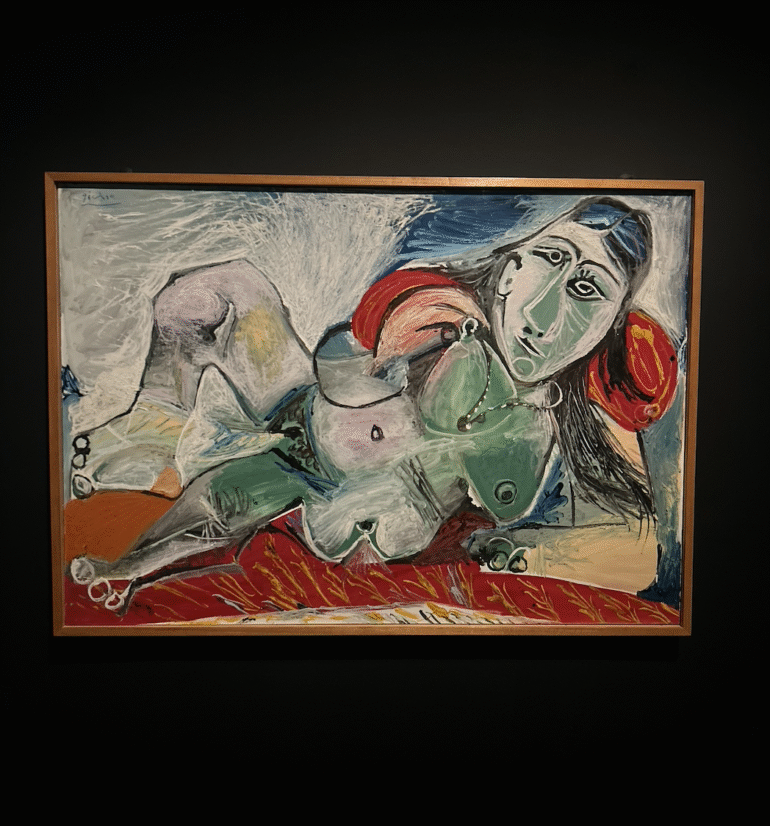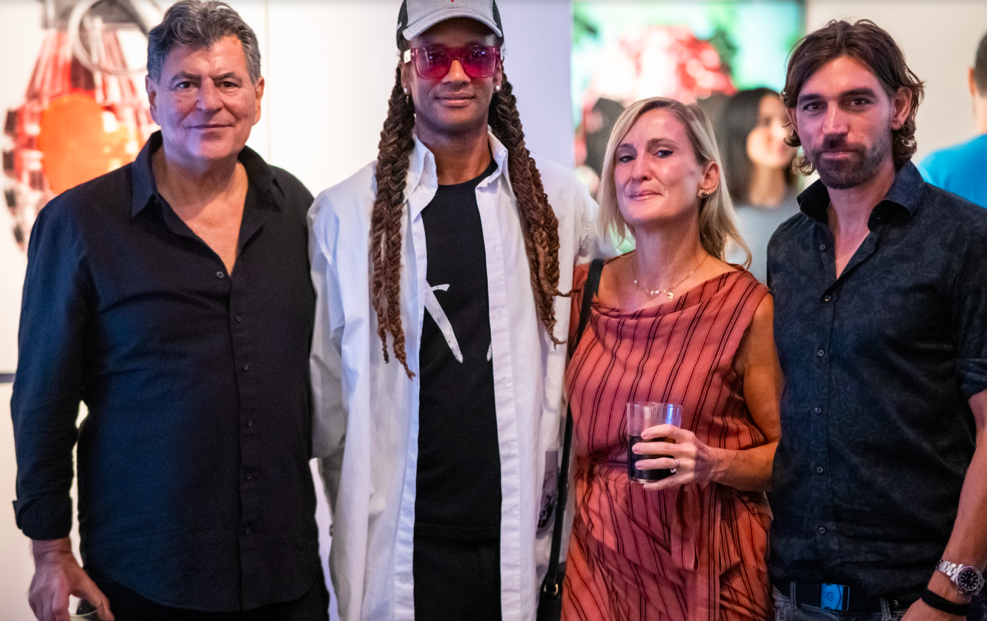Tate Modern has revealed a bold, atmospheric exhibition that repositions one of the 20th century’s most famous artists in a wholly new light. Theatre Picasso, running from 17th September 2025 to 12th April 2026, marks the centenary of Pablo Picasso’s explosive painting The Three Dancers (1925) with a tribute that is less a retrospective and more a theatrical reimagining of his artistic legacy. Curated by contemporary artist Wu Tsang and Tate curator Enrique Fuenteblanca, the show invites visitors to encounter Picasso’s work not in the hushed, white-walled stillness of the traditional gallery, but in a stage-like space charged with drama, movement, and transformation.
Housed in Tate Modern’s George Economou Gallery, the exhibition features over 50 works by Picasso, spanning painting, collage, sculpture, textiles, and archival film footage. Many of these works are on loan from major collections, including the Musée Picasso in Paris and Antibes, with several never before seen in the UK. But what makes Theatre Picasso so distinctive is its staging: curtains, spotlights, and a purpose-built stage structure turn the gallery into an immersive theatre. This scenography, designed by Lucie Rebeyrol of Studio Roll, collapses the line between gallery and performance space, asking us to see Picasso as both painter and performer.
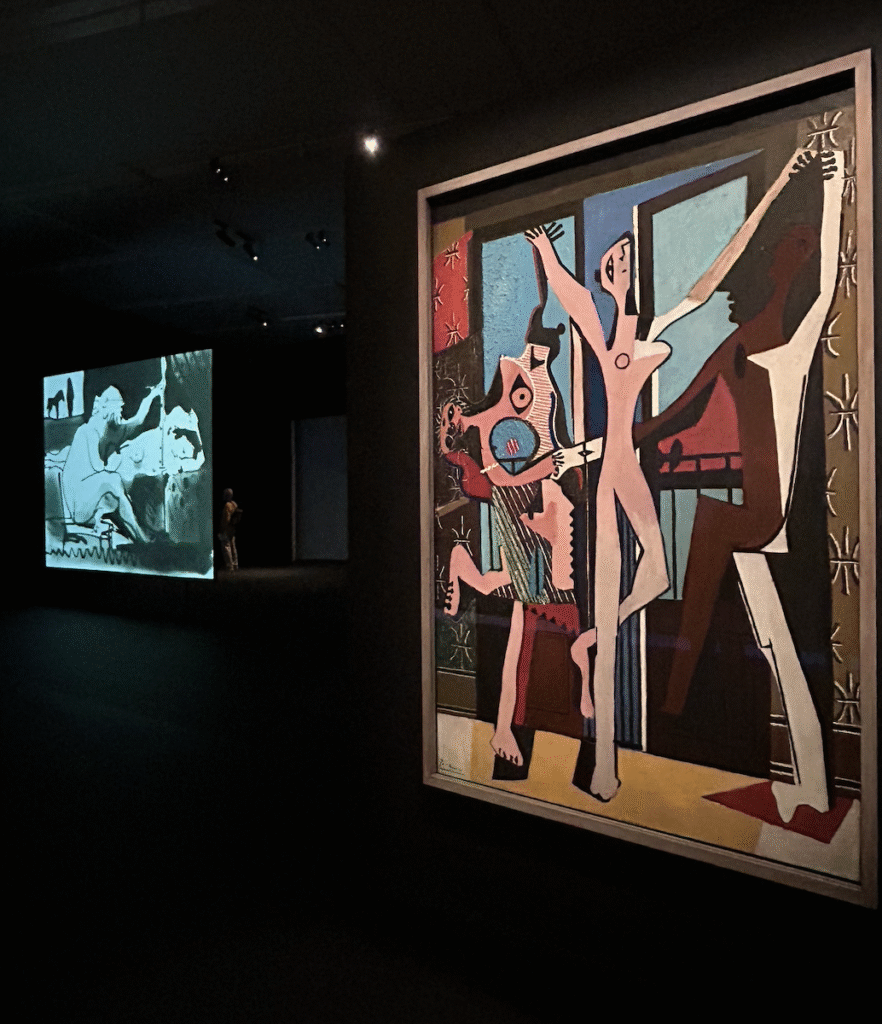
The Three Dancers: The Heart of the Show
At the centre of the exhibition is The Three Dancers, the radical canvas painted in 1925 at the height of Picasso’s dialogue with Surrealism. With its frenzied figures locked in a convulsive dance, it has long been interpreted as a meditation on love, desire, and death. Tate’s decision to anchor the show around this painting underscores its theatricality—the dancers appear not simply as figures in a composition, but as actors on a stage, their contorted bodies caught in an eternal performance. The painting becomes a gateway into the exhibition’s central premise: that Picasso’s art is inseparable from theatre, spectacle, and role-playing.
Around this centrepiece orbit some of Picasso’s most iconic and emotionally charged works. Weeping Woman (1937), with its jagged planes of grief, resonates here not only as a political statement but as an emblem of dramatic intensity. Nude Woman in a Red Armchair (1932) is cast in the role of the reclining muse, while the vast Minotaur tapestry from 1935 embodies both myth and theatre, its woven form suggesting the stage curtain itself. These works, in this setting, are not presented as static masterpieces but as players in a living drama.

Picasso as Performer
One of the most thought-provoking aspects of Theatre Picasso is its exploration of Picasso’s own self-mythologizing. Picasso was never just an artist; he was a personality, a carefully staged performance. Tsang and Fuenteblanca emphasise how Picasso cultivated the image of the artist-genius, the rebel, the showman. His art was a stage on which he projected not only his subjects—dancers, clowns, bullfighters—but himself.
This idea is reinforced through the inclusion of Henri-Georges Clouzot’s 1956 film The Mystery of Picasso. Shown in the exhibition, the film captures Picasso at work in his studio, the canvas becoming a screen through which we watch him conjure forms in real time. Here painting is theatre, and the artist, with brush and gesture, is both magician and actor. Visitors see Picasso not only producing images but performing the very act of creation. The footage underscores how deeply theatrical his process was—physical, gestural, dramatic.
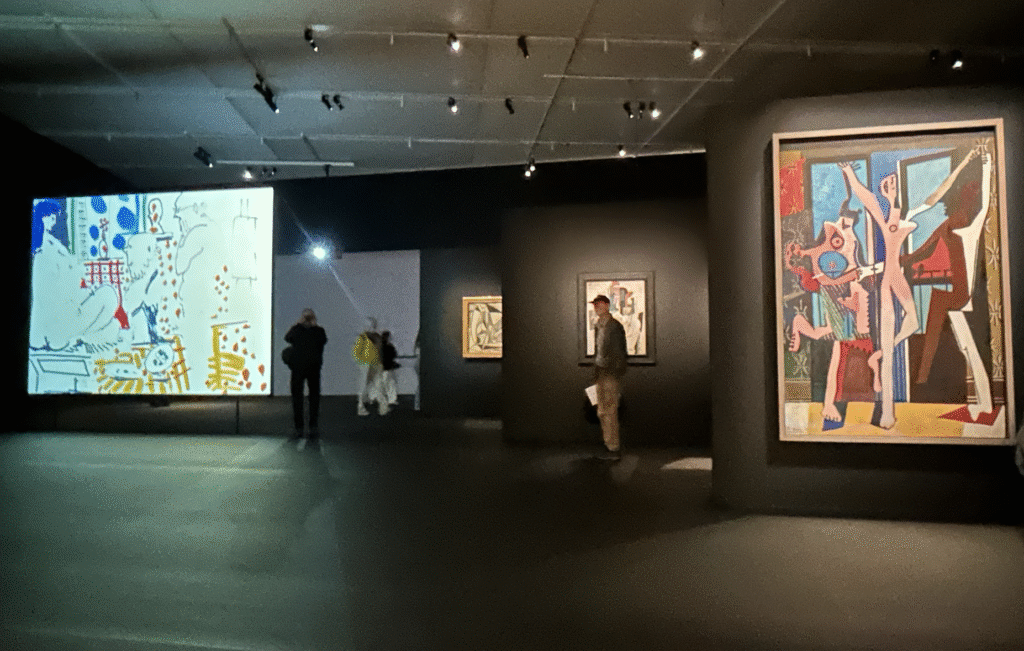
Circus, Dance, and Marginality
Another highlight of the exhibition is its attention to Picasso’s fascination with figures from the margins of society: dancers, circus performers, and acrobats. Works such as Girl in a Chemise (c.1905), Horse with a Youth in Blue (1905–06), and Acrobat (1930) recall the artist’s Rose and Blue Periods, when he gravitated toward performers and outsiders as metaphors for the artist himself. These figures embody themes of spectacle and transformation—they live in the liminal space between reality and performance, much as Picasso himself did. In this theatrical staging, they are seen anew, no longer simply sentimental subjects but avatars of Picasso’s own performative identity.
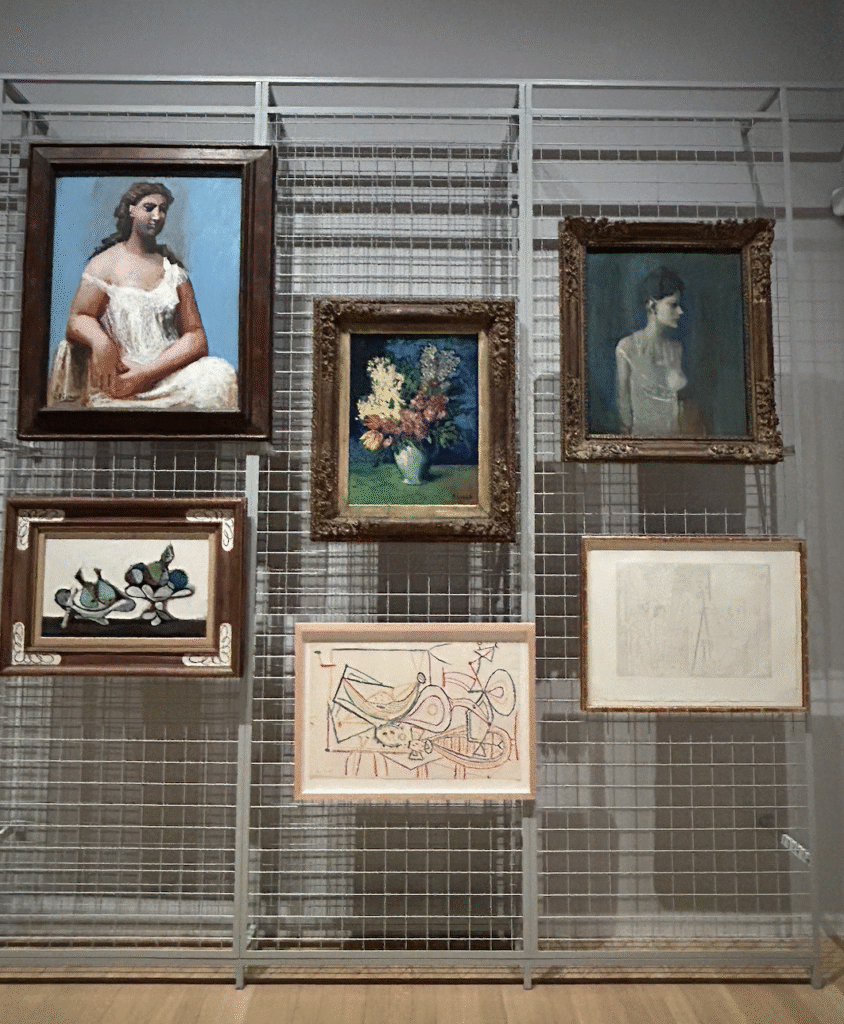
A Contemporary Lens
What distinguishes Theatre Picasso from other Picasso retrospectives is its dialogue with contemporary discourse. Tsang, known for her own multidisciplinary practice exploring identity, migration, and queerness, brings a fresh interpretive framework. She asks us to view Picasso not as a static figure enshrined in art history, but as a dynamic personality whose work resonates with ongoing questions of performance, persona, and power.
By framing Picasso through performance, the curators highlight his role in shaping the modern notion of the artist as celebrity—a figure whose private life, loves, and scandals are inseparable from their art. This approach complicates Picasso’s legacy, reminding us of his contradictions: the man who revolutionised art while also embodying deeply problematic attitudes toward the women in his life. Rather than resolve these tensions, Theatre Picasso stages them, allowing audiences to wrestle with Picasso’s genius and his failings within the same dramatic space.
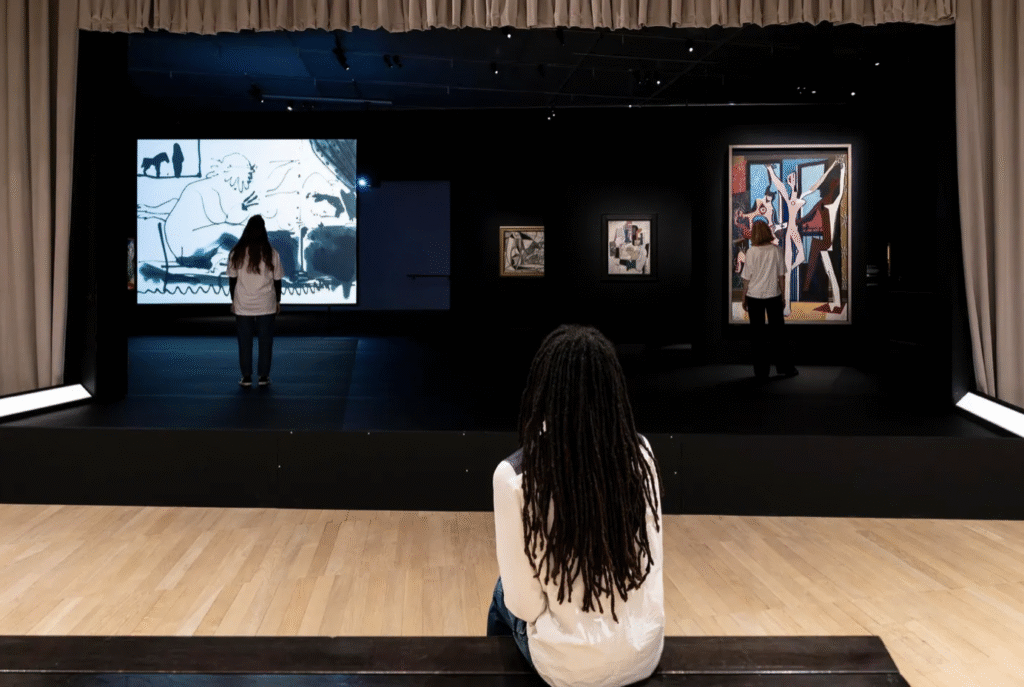
PHOTO COPYRIGHT TATE (LARINA FERNANDES)
Immersive Staging
The theatrical design by Lucie Rebeyrol plays a crucial role in making this reimagining successful. Visitors move not from room to room but from act to act, guided by light, shadow, and curtain. Works are illuminated as though they are performers stepping into a spotlight, while archival footage flickers like a ghostly interlude between scenes. The result is an exhibition that feels less like a static survey and more like a performance in its own right.
This sensorial approach transforms the viewing experience. Instead of passively consuming Picasso’s works, visitors are drawn into an active engagement: the staging demands that we consider not just what Picasso painted, but how his works might move, speak, or perform. It is a theatrical invitation to see art as living, breathing presence.
Recontextualisation, Not Retrospective
Perhaps the greatest achievement of Theatre Picasso is its refusal to be another exhaustive retrospective. The show does not attempt to cover every chapter of Picasso’s career or to present him as a monolithic genius. Instead, it recontextualises his work, choosing performance as a lens through which to reconsider both familiar and lesser-known pieces. This narrower focus brings clarity and freshness, avoiding the overwhelm that so often accompanies Picasso blockbusters.
It also situates Picasso in dialogue with the present. In an era when performance, identity, and spectacle are more entangled than ever—think social media personas, celebrity culture, and immersive theatre—Picasso’s performative strategies appear surprisingly contemporary. The exhibition asks us: how much of our own lives are performances, and how do we curate the personas we present to the world?
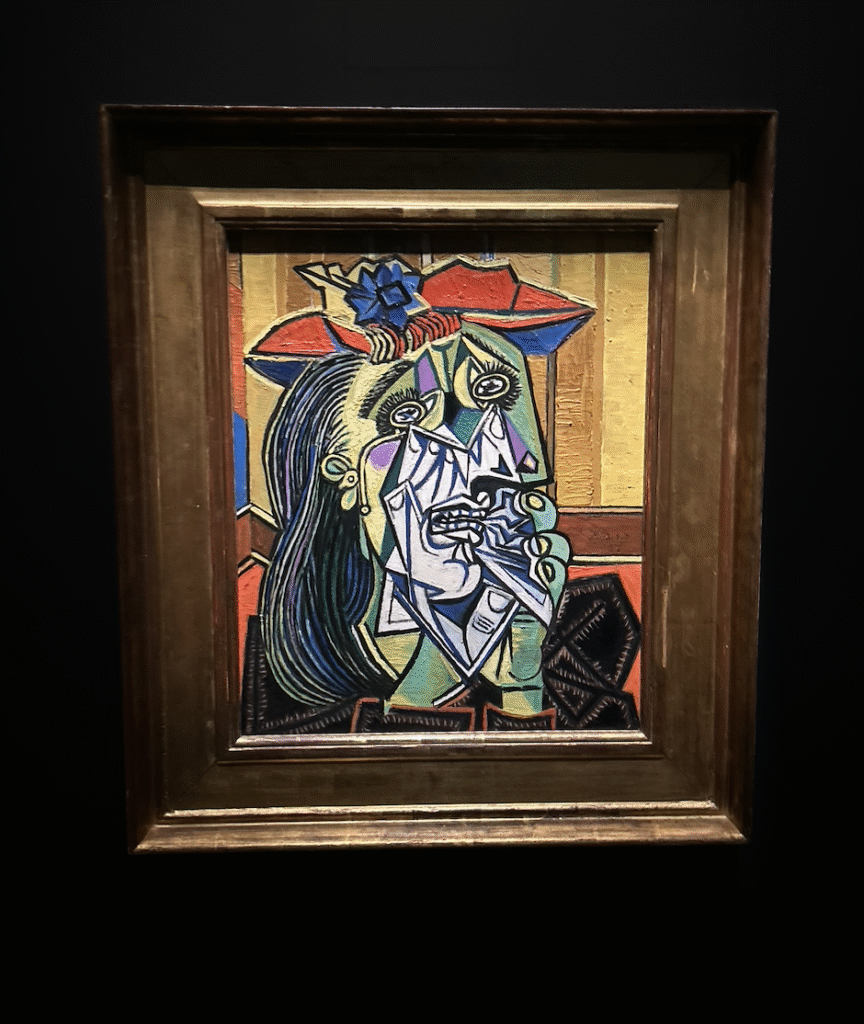
Final thoughts
Theatre Picasso is a triumph of curatorial imagination. By transforming the gallery into a stage, Tsang and Fuenteblanca reanimate works that might otherwise risk feeling over-familiar. The exhibition honours The Three Dancers in its centenary year not by simply celebrating Picasso’s past achievements, but by rethinking what they mean in the present.
For long-time admirers of Picasso, the show offers fresh insights into an artist whose work has been endlessly exhibited yet rarely staged with such theatrical flair. For newcomers, it provides a dynamic, accessible entry point into the world of Picasso—an experience that is both visually rich and intellectually engaging.
Ultimately, Theatre Picasso reminds us that Picasso was not only a painter of images but a master of roles. He was at once the bohemian outsider, the mythic Minotaur, the tragic clown, the avant-garde provocateur. In placing his art on the stage, Tate Modern allows us to see Picasso as he perhaps always wished to be seen: not just as an artist, but as a performer in the grand theatre of modern life.
Theatre Picasso is at Tate Modern from 17th September, 2025 until 12th April, 2026. Tickets available here.


